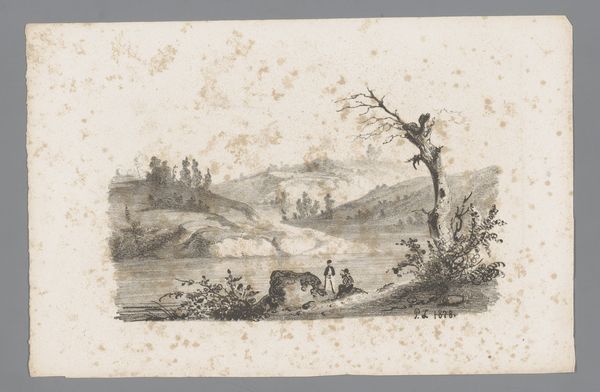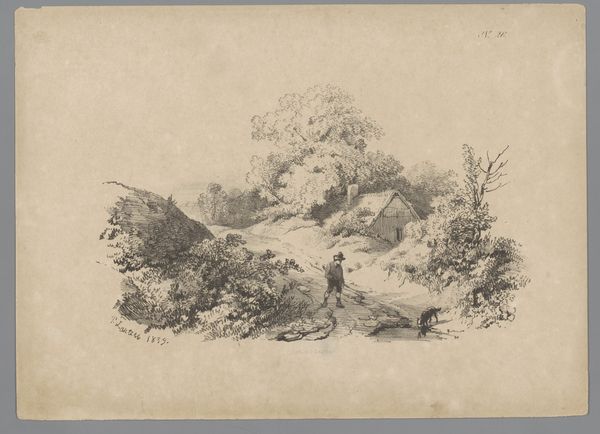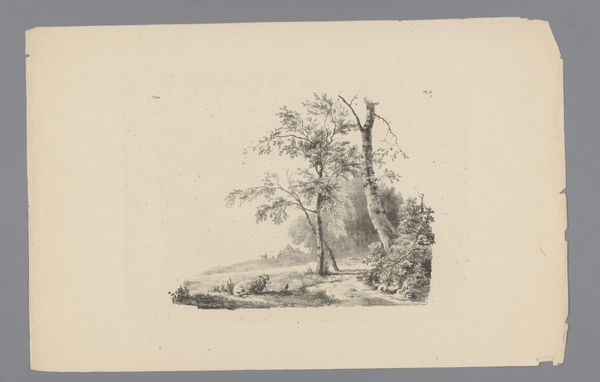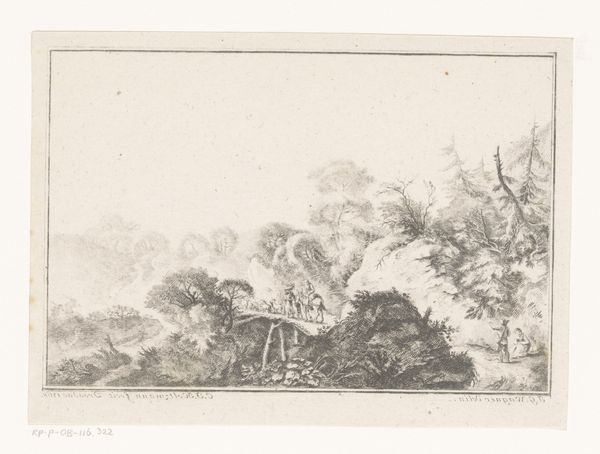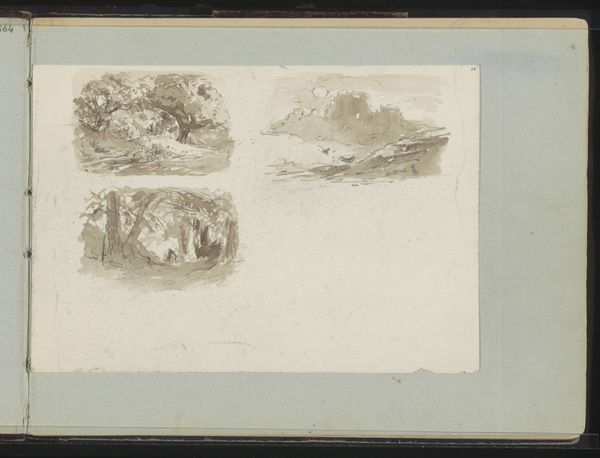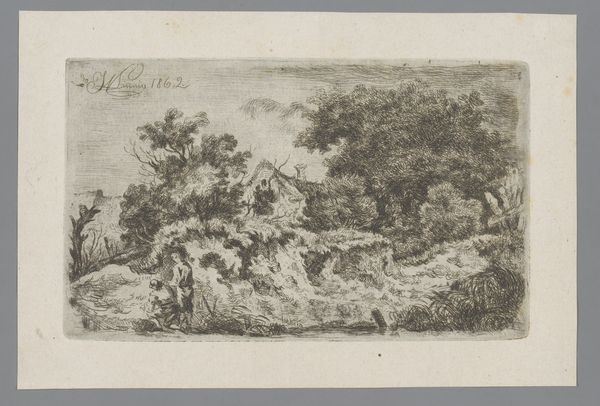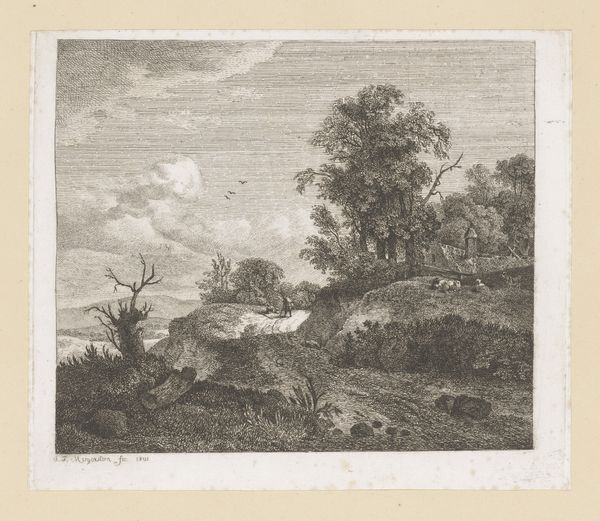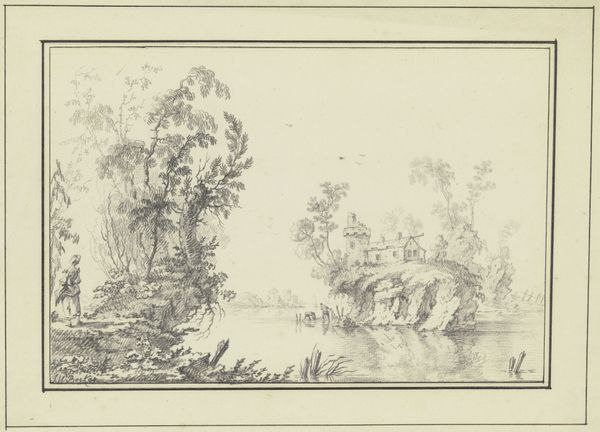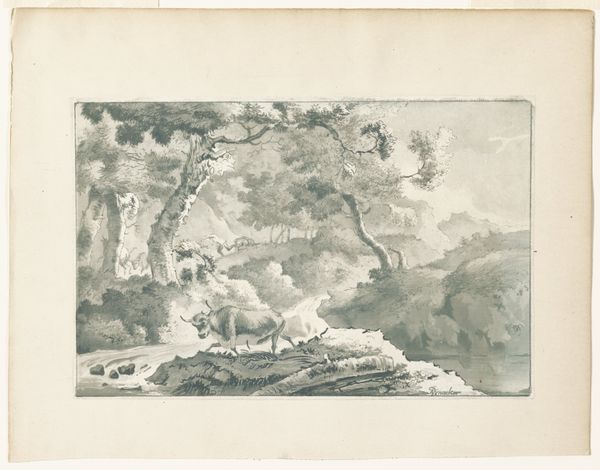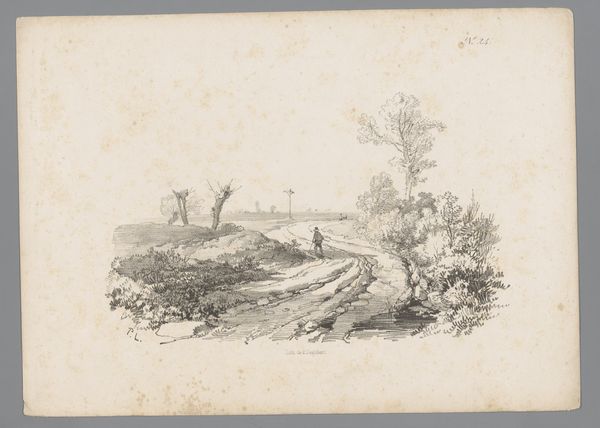
drawing, pencil
#
drawing
#
landscape
#
romanticism
#
pencil
#
realism
Dimensions: height 171 mm, width 262 mm
Copyright: Rijks Museum: Open Domain
Curator: This is Paulus Lauters' "Landschap met figuren bij een rots," a drawing rendered in pencil. It's believed to have been created sometime between 1827 and 1851. It now resides in the Rijksmuseum. Editor: Immediately, the towering rock formation, this imposing cliff-face, grabs the attention. It seems almost like a natural cathedral, doesn't it? Quite dramatic given the restrained pencil work. Curator: Yes, Lauters’ skill with pencil allows for very fine detail. Look at the varying pressure he uses to suggest texture – the roughness of the rocks against the softness of the foliage. It speaks to an understanding of the natural processes that shaped this environment. I see the legacy of artisanal knowledge too. Editor: And the figures... tiny, almost incidental, grouped at the base. They enhance that feeling of awe, reminding me of Romanticism's fascination with the sublime power of nature, dwarfing human existence. Curator: The location probably mattered a great deal. The 19th century witnessed an increased public interest in accessing and experiencing landscapes directly, a social phenomenon supported by innovations in infrastructure. Think of how the railroad opened remote picturesque locations to larger crowds. This work is evidence of this type of material shift, I think. Editor: Certainly. But that rock, to me, echoes centuries of artistic and literary symbolism. It feels biblical, like the rock from which Moses struck water or a protective shelter. Rocks offer that kind of emotional resonance – safety, permanence, perhaps even a hint of the spiritual. Curator: A romantic perspective would say it stands as an obstacle against change; an appeal to tradition. Editor: Precisely, but the scale of the thing is interesting, the way the whole composition pulls you in to contemplate nature and history together. Curator: Looking closer, it strikes me how deftly he achieves depth. Not just through perspective but through the subtle gradations of light and shadow achieved with such a limited medium. The man power! Editor: For me, I keep coming back to that contrast: the detailed naturalism versus that evocative, almost primordial symbolism. There’s a lot packed into such a seemingly simple drawing. Curator: I agree. Thank you. Examining it through your interpretive lens really underscores that fact. Editor: The pleasure was mine, offering a glance into the hidden lives of symbolic meaning.
Comments
No comments
Be the first to comment and join the conversation on the ultimate creative platform.
